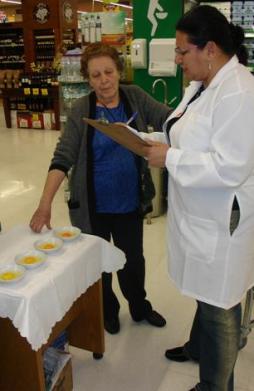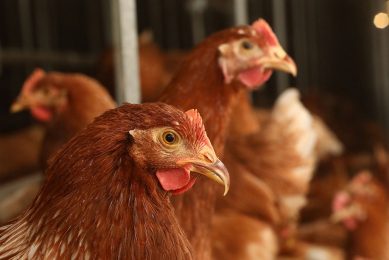Adding value to egg products

Egg processing serves a rapidly increasing market worldwide. The number of eggs going for breaking are now at an all time high representing a third of total production in places like North America, the EU or Japan. Meanwhile, there is an increase in demand for product differentiation to meet separate market requirements. Extensive surveys have emphasised consumer preference for a deep yellow colour in a number of important products, including eggs, pasta or cakes.
By Jose M. Hernandez, Catherine Hamelin, Takehiko Hayakawa, Beatriz Ibarra and Renato Souza, DSM Nutritional Products (jose-maria.hernandez@dsm.com)
Global egg consumption has tripled in the past 40 years with consumer quality expectations increasing just as fast. Eggs used for processing are at an all-time high in North America at 32% of total production (up to 50% within in-line facilities in 2008), while in Europe around 27% of all eggs produced in 2008 were bought by processors. Consumer research has shown that egg yolk-influenced colour of foods (such as bakery products, egg pasta, etc.) is important for consumers. An innovative tool, iCheck® Eggs, was recently awarded the French SPACE 2008 Innov’Space prize for quality-promoting new ideas in the poultry industry, as well as considered a unique Technical Innovation by the Spanish FIMA Ganadera2009. This features a new portable programme offering on-the-spot analysis of egg product colour. Dietary adjustments for layers are also possible so that yolksmeet customer requirements.
Growing market
The dramatic growth in global egg consumption and associated world trade with eggs means that quality control of production and processing has never been more important. There are increases in demand worldwide for convenience foods because homemakers have less time to prepare meals in their own kitchens. As a result, more eggs are traded and transported in a liquid form to meet processors’ requirements. This offers many advantages with regards to disease control and hygiene. Going down this road, however, demands strict monitoring of quality and marketing criteria.
International egg trade now amounts to over a million tonnes per year. The global scale is widening with Brazil, for example, exporting eggs not only to neighbouring S. American countries, but also Japan, Africa and the Middle East. Most trade, however, is still within the EU. In 2007, the Netherlands exported 295,000 t of shell eggs, Spain and Poland 96,000 t each, while Germany, the biggest importer of eggs in the world, some 300,000 t.
At the same time global consumption of eggs increased 200% to 59 million t between 1970 and 2005, and is expected to increase by another 20% by 2015, according to Professor Hans-Wilhelm Windhorst, Institute for Spatial Analysis and Planning in Areas of Intensive Agriculture (ISPA), Germany. The use of egg products in convenience foods is increasing just as rapidly, for instance for mayonnaise, pasta, biscuits and pastries.
Worldwide trade in liquid and powder egg products has a lot more behind it than just saving labour in the home or in the catering industry. The food safety consideration is a very large part of the development. Egg products are prepared in specialised plants under strict hygiene and safety regulations, such as ISO and HACCP. It therefore offers a safer and more convenient product through pasteurisation and professional control.
Consumer preference
There is more to eating and drinking than just satisfying our appetite or obtaining sufficient nutrients to survive. In today’s society, we expect meal times to be pleasant experiences as well. We want our food to look good, smell good, taste good, and have the right consistency, as well as being wholesome, nutritious and safe. We all know how the sight of food affects us. Just looking at a photo of an attractive dish can make the mouth water. Imagine if all foods were a dull grey colour. If leafy vegetables were brown instead of green, tomatoes blue instead of red and egg yolks green instead of a golden yellow!
The usually rich colour of the egg yolk is a natural phenomenon and a sign that the bird producing the egg is in good health. The colour comes from carotenoids, a group of natural compounds that the birds can find in their feed. Carotenoids are vital nutrients for many species, including humans. Poultry need carotenoids for healthy growth, metabolism and reproduction, but cannot produce them in the body. Wild birds can select the best sources to cover their carotenoid needs, as they also do with some other nutrients as vitamins or minerals. Farm birds depend on the feed provided, and it is common practice to ensure the optimum intake of carotenoids by adding pure carotenoids to the feed.
Clear answers from surveys
Consumer surveys asking about egg quality in France, Germany, Italy, the UK, Spain, Greece, Brazil, China and recently Russia concluded that yolk colour, together with shell strength and albumen consistency, represent important criteria for consumer appeal. Consumers appear to draw conclusions on freshness, quality and other intangibles based on the physical and observable characteristics of eggs.
DSM has carried out quantitative consumer surveys with samples of yolks ranging in colour intensity from 8, 10, 12 and 14 on the DSM yolk colour fan, the worldwide reference to measure yolk colour in table eggs. Most consumers in the countries mentioned above chose the darkest yolk colour eggs in the 12-14 yolk colour fan range as the preferred ones. The same results have been achieved for food products featuring eggs and giving the characteristic colour in mayonnaise, egg pasta, baked products, etc.
At the last Latin American Poultry Congress in Porto Alegre, Brazil, DSM conducted a survey where about 600 people were asked their preferences between less pigmented yolk (7 in the DSM yolk colour fan and a pale colour) and more golden yellow yolk (12 in the yolk colour fan range). They were also asked what they felt about two cakes produced with the aforementioned yolk colours. A total of 71% of respondents said they preferred the more pigmented yolk and 76% the more deeply hued cake (see Figure).
Food professionals need raw materials such as egg yolk to be consistent in quality to guarantee a uniform colour for their food products since colour can be a decisive factor at the moment of purchase.
From feed to food
By understanding consumer preferences for a deeper yellow colour in eggs and egg products, the first challenge for the egg processing industry is to accurately measure colour in egg products so that food such as mayonnaise or egg pasta can be consistently produced with the correct colour.
A second challenge is the translation of these required specifications into layer feed diet to helps achieve the desired yolk colour through the optimum combination of feed carotenoids. The third goal is ensuring feed carotenoids of the highest quality, traceability, and from the safest sources.
Answering to this important industry challenge is Carophyll® Check, an innovative concept that aims to provide the egg processing industry with added value by ensuring reliable coloration for egg-based products. This new concept is based on three points: 1-Dietary recommendations for laying hens for cost-effective production of eggs of the required homogeneous yolk colour as demanded by the egg processing industry. DSM has developed software specifically for egg products called DYCO (DSM Yolk Colour Optimizer). Following determination of required yolk colour expressed in beta-carotene equivalents in egg product (see Table), DYCO indicates the optimal combination of yellow and red carotenoids for inclusion in layer feed.2-The notebook-sized “iCheck® Egg” spectrophotometer kit specially designed for on-the-spot and rapid monitoring of yolk and egg product colour through determination of beta-carotene equivalents. This small portable kit, which gives results in less than 10 minutes, offers the special advantage of reliably replacing time and cost intensive sending of samples to specialist laboratories.3-The Carophyll® carotenoid portfolio. Identical to natural carotenoids, these carotenoids are manufactured according to DSM quality standards. They guarantee maximum traceability quality, sustainability, and reliability and for optimal colour performance and peace of mind.
Feed and food safety
The highest product quality as well as processor and consumer peace of mind is currently of the highest importance following global reports of feed and food contamination that have increased governmental and consumer awareness of feed and food safety. Recent reports have told of thousands of infants and young children hospitalised in China as a result of the consumption of melamine-contaminated infant food and related dairy products. Also, a dioxin-tainted natural pigment used in animal feed was discovered in the Netherlands and France leading to a withdraw of the products from the market. This most recent scare happened just one month after the food scandal in Ireland with dioxin-contaminated pork.
These contamination scares presents feed and food retailers, manufacturers and ingredient producers, as well as governments involved, with a serious challenge in the reassurance of consumers regarding the foods they buy. That is why DSM, producer of ingredients and premixes for the animal and human nutrition and health markets, says that it has developed a quality seal for all its food and feed products that includes the Carophyll® carotenoid programme: Quality for Life™ (www.qualityforlife.com).This programme assures food and feed companies that the products they are buying have been manufactured using the highest standards of processing and personnel safety. The programme also indicates that the products themselves are safe, and that they have been produced in a sustainable way that takes full account of the needs of our environment, food chain partners and the regulatory framework governing all manufacturing operations.
World Poultry Vol. 25 No. 5













